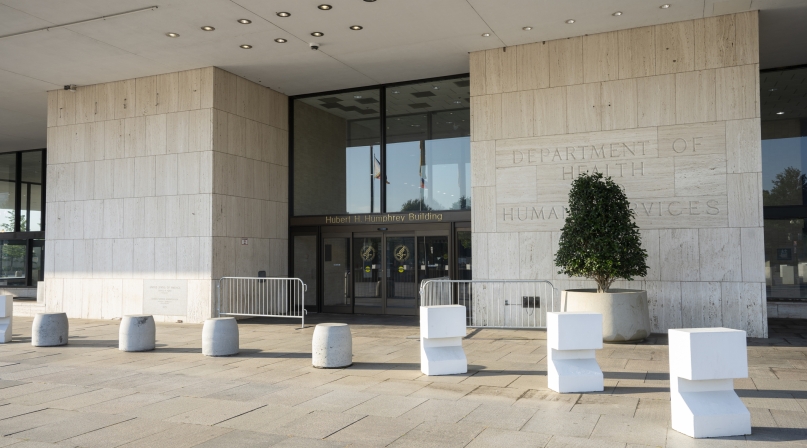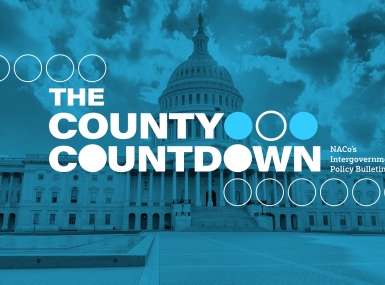HHS announces major restructuring
Author

Blaire Bryant

Julia Cortina

Naomi Freel

Kevin Moore
Upcoming Events
Related News

Key Takeaways
On March 27, the U.S. Department of Health and Human Services (HHS) announced a sweeping reorganization that will consolidate agencies, shift key programs under a new framework and eliminate thousands of positions. This change brings HHS in line with President Trump's Executive Order, “Implementing the President’s ‘Department of Government Efficiency’ Workforce Optimization Initiative.”
Read the Press Release Read the Fact Sheet
Key changes in the HHS restructuring
The restructuring significantly alters HHS’s organizational structure, affecting major agencies and functions. Notably, the restructure plan will consolidate 28 divisions into 15, trim the 10 existing regional offices to 4 and reduce the current full-time employee workforce from 82,000 to 62,000. More specifically, the changes will:
- Create the Administration for a Healthy America (AHA): AHA will consolidate offices focused on chronic disease prevention, behavioral health and community health services, including the Office of the Assistant Secretary for Health (OASH), Health Resources and Services Administration (HRSA), Substance Abuse and Mental Health Services Administration (SAMHSA), Agency for Toxic Substances and Disease Registry (ATSDR) and National Institute for Occupational Safety and Health (NIOSH). This consolidation will streamline public health efforts and centralize programs for low-income and at-risk populations.
- Reorganize the Centers for Disease Control and Prevention (CDC) and Administration for Strategic Preparedness and Response (ASPR): The CDC will return its focus to epidemic preparedness and response, moving away from broader public health research initiatives. It will also absorb ASPR, which oversaw pandemic preparedness and the Strategic National Stockpile. While the CDC faces a decrease of 2,4000 employees, the incorporation of ASPR will bring 1,000 employees into the Center, making the cut 1,400.
- Restructure the Centers for Medicare & Medicaid Services (CMS): CMS will absorb some functions from the Administration for Community Living (ACL) with respect to programs for older adults and people with disabilities. While CMS faces a 300-employee cut, this reduction will not impact Medicaid and Medicare Services.
- Disperse Administration for Community Living (ACL) programs: Programs under ACL that support older adults and individuals with disabilities, such as programs authorized by the Older American Act (OAA), will be spilt across the Administration for Children and Families (ACF), Assistant Secretary for Planning and Evaluation (ASPE) and CMS.
- Consolidate regional offices (Updated 4/2/2025): Regional offices operating in Boston, New York City, Chicago, San Francisco and Seattle were closed in an effort to reduce the agency's operating costs. These offices served 22 states that will be divided between the 5 remaining regional offices in Atlanta, Dallas, Philadelphia, Denver and Kansas City.
Impacts on counties
HHS Secretary Robert F. Kennedy, Jr. stated that the restructuring aims to improve efficiency, reduce bureaucracy and realign the department’s focus on core health priorities. However, the changes—including major program consolidations and the closure of regional offices—have raised concerns about potential disruptions to HHS-funded programs and regulatory oversight.
As essential partners in providing a wide range of critical human services and health programs to residents, counties must be aware of how the HHS restructuring could influence our ability to fund and provide these essential services in several key ways:
- Potential Delays in Federal Support: The closure of regional offices and staffing reductions could slow grant administration, technical assistance and federal-state-local coordination. It is being reported that staff overseeing the Low Income Home Energy Program (LIHEAP) and the Social Services Block Grant (SSBG) have all been terminated. These programs administer funds to ensure vulnerable populations maintain utilities and are protected from neglect and abuse, respectively.
- Changes in Public Health and Aging Services Funding Streams: With the creation of AHA and the restructuring of CDC and ACL, counties may experience shifts in funding availability and eligibility for new and existing public health and aging initiatives.
- Impact on Behavioral Health Services: Merging SAMHSA into AHA could alter funding mechanisms and administrative processes for county-run mental health and substance use disorder services.
As these changes take effect counties, as critical intergovernmental partners, must remain actively engaged with federal policymakers uphold their role in shaping policies and ensuring continued access to critical resources for health and human service programs. NACo will continue to advocate for county priorities at the federal level and monitor developments to support counties throughout the transition.
Advocacy
HHS moves to reduce public comment in rulemaking
On February 28, the U.S. Department of Health and Human Services (HHS) announced a policy change limiting public comment opportunities to only those required by law. Published in the Federal Register on March 3, the decision rescinds the “Richardson Waiver,” a 1971 directive from then-HHS Secretary Elliot Richardson that encouraged broader public input on regulations related to public benefits, grants and healthcare policies.

Related News

County Countdown – Dec. 15, 2025
Every other week, NACo's County Countdown reviews top federal policy advocacy items with an eye towards counties and the intergovernmental partnership.

U.S. Department of Agriculture unveils $700 million for regenerative agriculture
On December 10, U.S. Secretary of Agriculture Brooke Rollins announced the launch of a $700 million pilot program to support regenerative agriculture practices across the country.

HHS releases rule repealing federal nursing home staffing mandate, supporting county long term care facilities
On December 2, the U.S. Department of Health and Human Services (HHS) published an interim final rule that repeals the federal nursing home staffing mandate, a regulation that would have required long-term care facilities to meet strict minimum staffing levels.